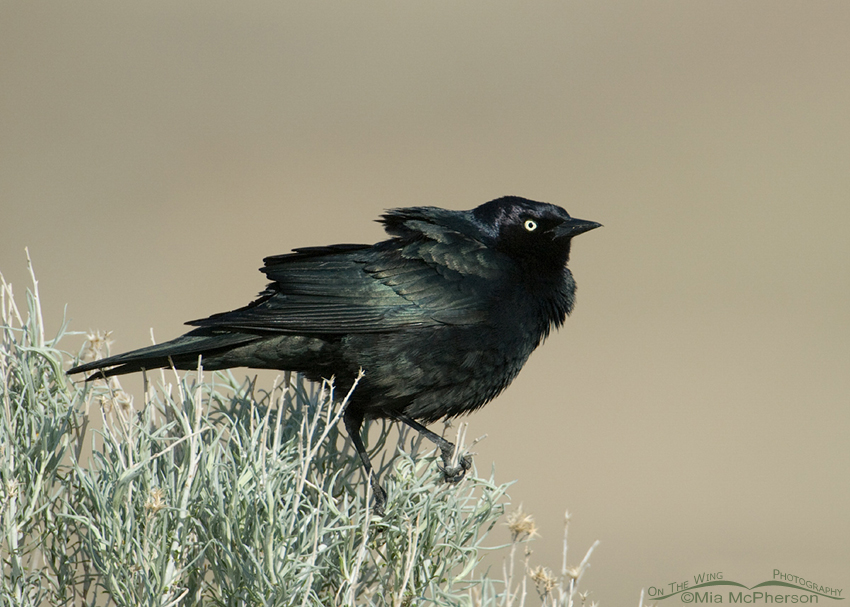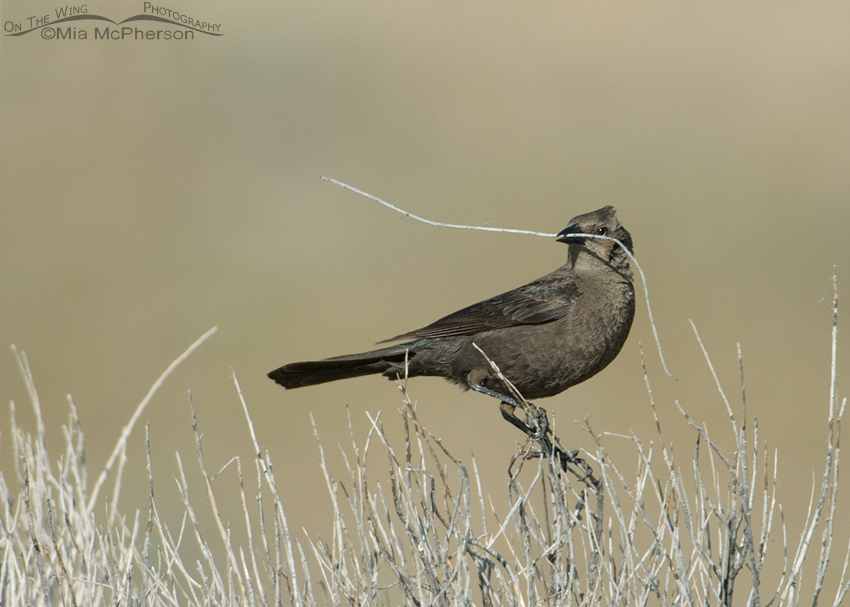Brewer’s Blackbirds
 Male Brewer’s Blackbird displaying – Nikon D200, f6.3, 1/1250, ISO 500, Nikkor 200-400mm VR with 1.4x TC at 400mm, natural light
Male Brewer’s Blackbird displaying – Nikon D200, f6.3, 1/1250, ISO 500, Nikkor 200-400mm VR with 1.4x TC at 400mm, natural light
While out on Antelope Island State Park on Friday I spotted a male Brewer’s Blackbird on top of a rabbitbrush, the light was just great for viewing and photographing the iridescent teals, blues, greens and purples that can show up on these “black” birds. I was even more tickled when the blackbird started to display because that really made the iridescence even more delightful. I have a lovely series of photos of this male now.
I can’t say that the call of the male while displaying is enchanting or melodious but I am almost certain the female Brewer’s Blackbirds must think so.
 Female Brewer’s Blackbird with nesting material – Nikon D200, f6.3, 1/1000, ISO 500, +0.3 EV, Nikkor 200-400mm VR with 1.4x TC at 400mm, natural light
Female Brewer’s Blackbird with nesting material – Nikon D200, f6.3, 1/1000, ISO 500, +0.3 EV, Nikkor 200-400mm VR with 1.4x TC at 400mm, natural light
This female Brewer’s Blackbird is the mate of the male above, she flew up from the other side of the road with nesting material in her bill and perched for a few moments before flying into another bush with the twig. When the female left the male followed her across the road, she went down onto the ground and he perched high watching over her and when she flew back to the nest with more nesting material he followed her and stayed close. That behavior happened several times. I wish the female had perched a bit closer with her nesting material than she did but I was still pleased to get a series of images of her with this twig.
All in all it was great fun photographing these Brewer’s Blackbirds displaying and nesting on Antelope Island.
Life is good.
Mia
Click here to see more of my Brewer’s Blackbird photos plus facts and information about this species.


Very nice! Find the most beautiful aspect of a bird and show them to everyone–that’s what a good photographer does. You’re very good Mia.
Thank you Laurence, yer goin’ to make me blush!
Gorgeous images, Mia. You caught all the detail and the fine hues of the birds. I love the highlight that you caught in the female’s eye.
Thank you Bob, they are beautiful birds.